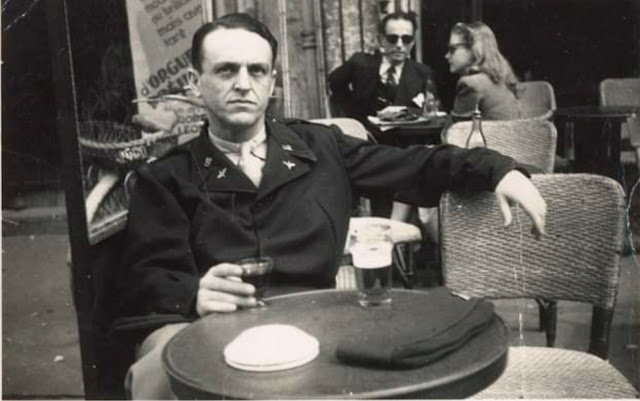"The Hunt for Red October" and the Storozhevoy Incident
Tom Clancy had longed to write a thriller ever since he was a young man majoring in English at Loyola College in the late ‘60s. Although Clancy was a devout patriot, severe myopia prevented him from serving in the Vietnam War, and the need to support his family forced him put his literary ambitions aside and take up a career selling insurance. But in 1976, Clancy read an unconfirmed report in The Washington Post about a mutiny aboard the Soviet frigate Storozhevoy, and his impulse to write returned. “That mutiny rattled around in my head for years,” Clancy recalled.
 |
| Soviet Krivak-class destroyer Storozhevoy |
In 1982, Clancy found more details about the Storozhevoy incident in a master’s thesis he discovered in the U.S. Naval Academy library. That thesis, “Mutiny on the Storozhevoy: A Case Study of Dissent in the Soviet Navy,” was written by Lt. Greg Young, who was studying for his master’s degree in national security affairs. After reading it, Clancy wrote to Young asking for permission to use some material from it, and for Young’s help in locating unclassified source material on antisubmarine warfare.
 |
| Author Tom Clancy in 1988 |
Lt. Young’s thesis illuminated a fascinating incident that occurred toward the end of the decades-long period of tensions between the US and the Soviet Union. In November 1975, the Soviet anti-submarine frigate Storozhevoy (which translates to Watchdog) tried to escape to Sweden as the first stage in an attempt to instigate a military coup against the Communist Party leadership, which had long been bankrupting the nation with Cold War military spending while ignoring the most basic needs of citizens. The ship’s deputy commanding officer and political officer, Captain Valery Sablin, led the attempted mutiny. Sablin didn’t have to kill anyone to accomplish this feat – he actually talked eight of the ship’s officers into helping him with his plan. Then, on the night of the mutiny, Sablin showed the crew the classic film The Battleship Potemkin, which dramatizes a real mutiny that occurred in the tsarist navy in 1905. Afterward, when Sablin announced his plans to the ship’s enlisted men, almost all of them sided with him.
 |
| Captain Valery Sablin |
Alexander Shein, one of the Storozhevoy sailors who supported Sablin’s plan, later recalled, “I asked Sablin how he planned to deal with this dissatisfaction throughout the country. He said that he wanted to take the ship out of Soviet territory and into international waters and send a telegram to Navy Headquarters making specific demands. Then, when he had accomplished this, he’d go on radio and television with an appeal to create a new party and social order.”
 |
| Storozhevoy's run across the Baltic Sea into Swedish territorial waters (with a border patrol ship in the foreground) on November 9, 1975 |
Though Captain Sablin was able to get the Storozhevoy across the Soviet border and 21 miles toward Swedish territorial waters, the ship was intercepted by Soviet aircraft and forced to return to base. Sablin was tried by the Supreme Court’s military wing, found guilty and sentenced to death by firing squad.
The Storozhevoy rebellion provided Tom Clancy with the inspiration to write his first novel, The Hunt for Red October, although he admits to taking a great deal of dramatic license. “My book has a historical foundation,” Clancy acknowledged, “but it is a work of fiction.”
 |
| Able Seaman Alexander Shein |
Years later, Storozhevoy crew member Alexander Shein still admired his brave captain. “Every society needs noble spirits,” he said. “Without them, no society can move forward. Captain Valery Sablin was that kind of noble spirit.”
Patricia Blake, “One of Their Subs Is Missing,” Time, 3/4/85
“Upheaval in the East; How the Mutiny on Red October Sub Really Happened,” New York Times, 3/1/90
“Real-Life Red October,” Time, 3/12/90
Gregory D. Young & Nate Braden, The Last Sentry: The True Story that Inspired 'The Hunt for Red October', U.S. Naval Institute Press, 2005


Comments